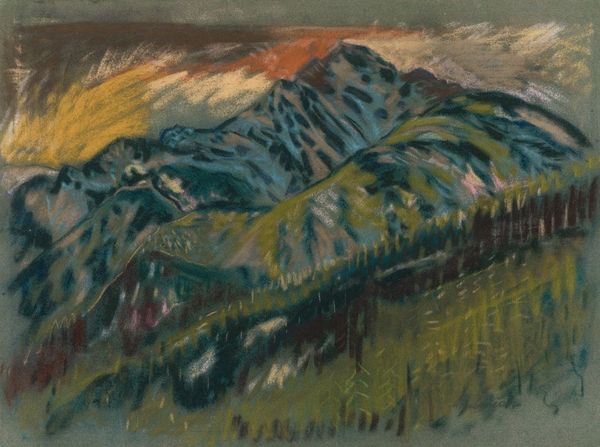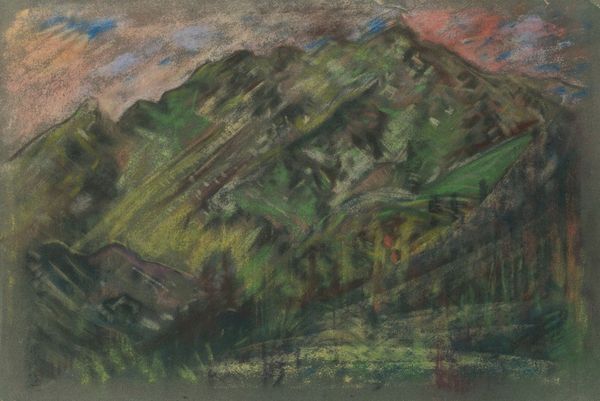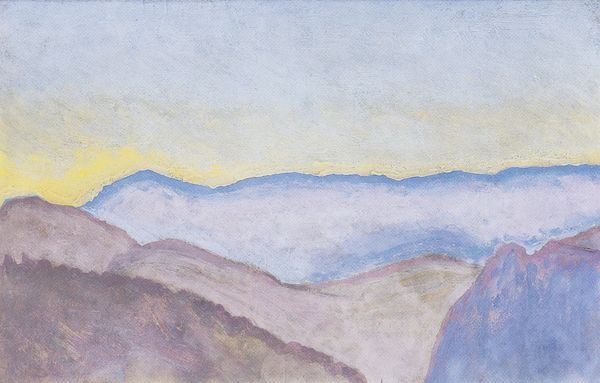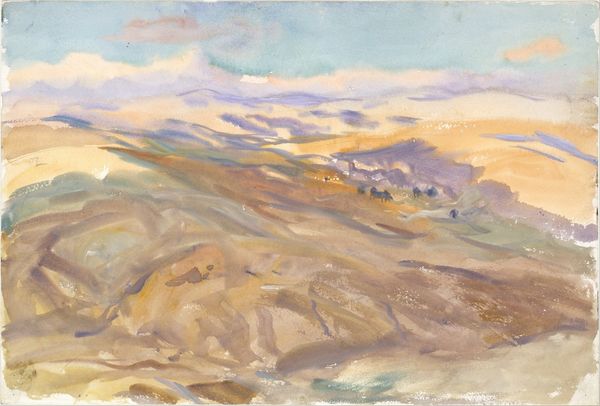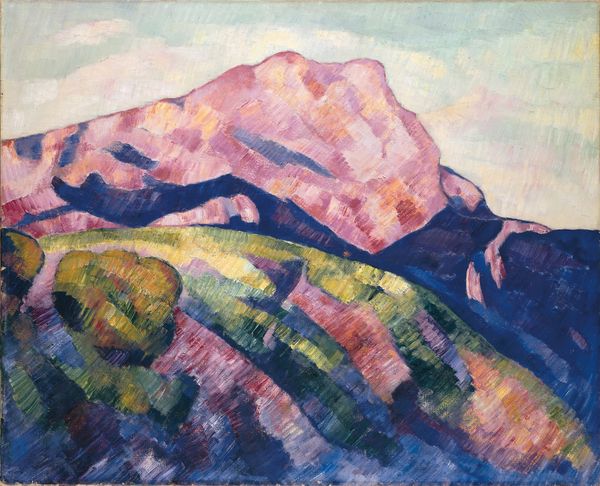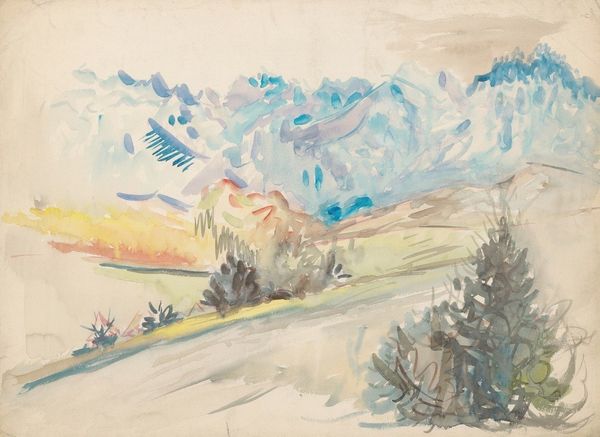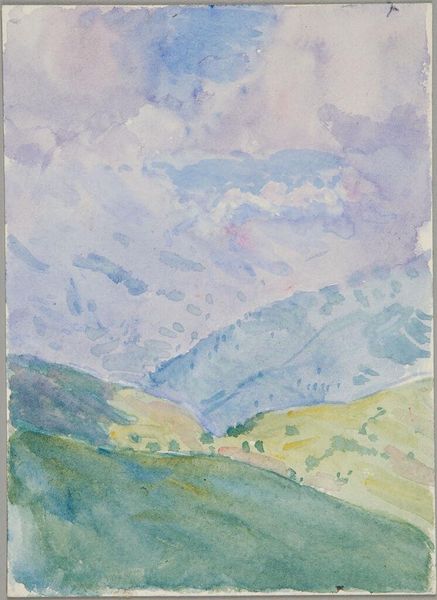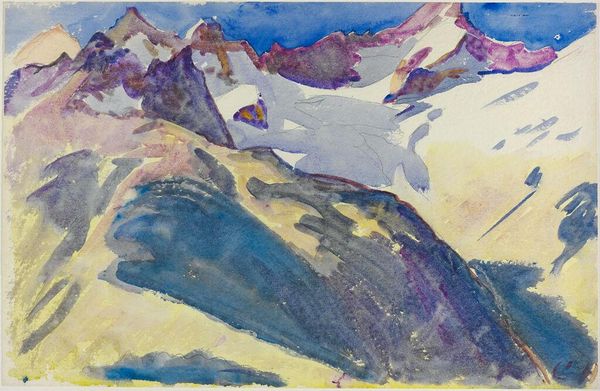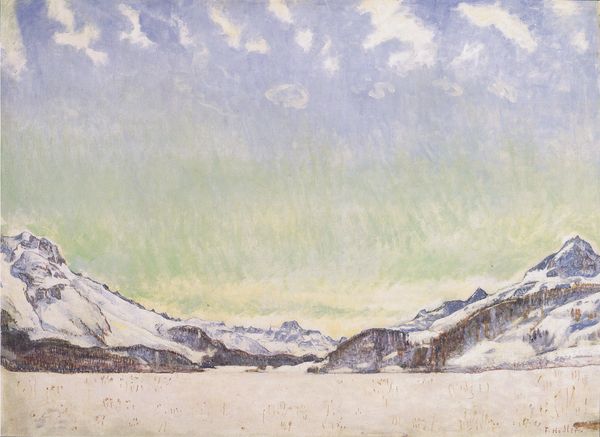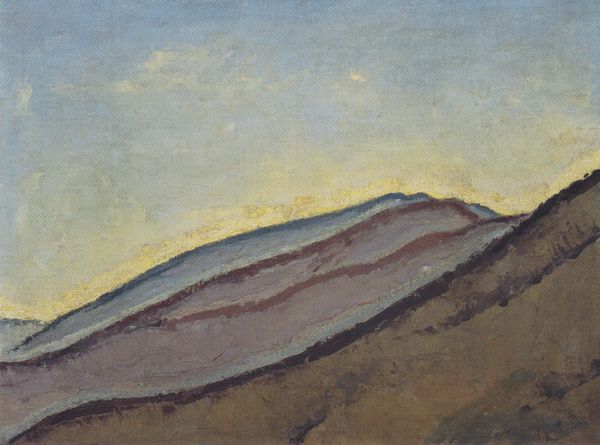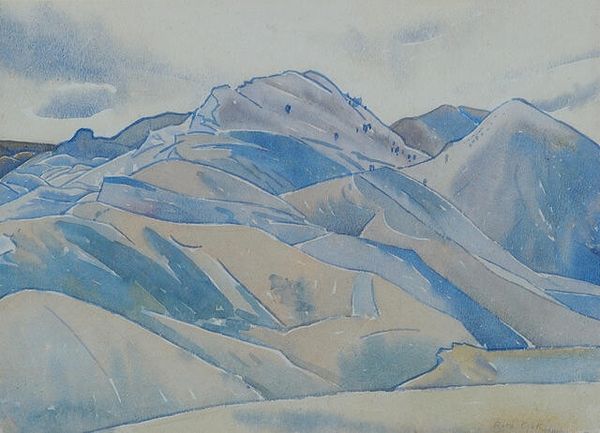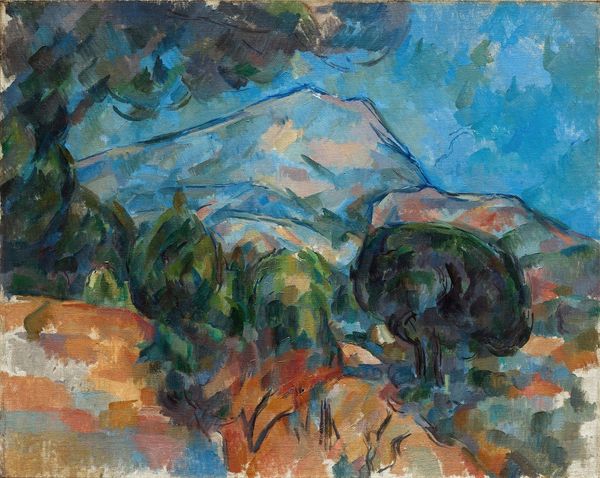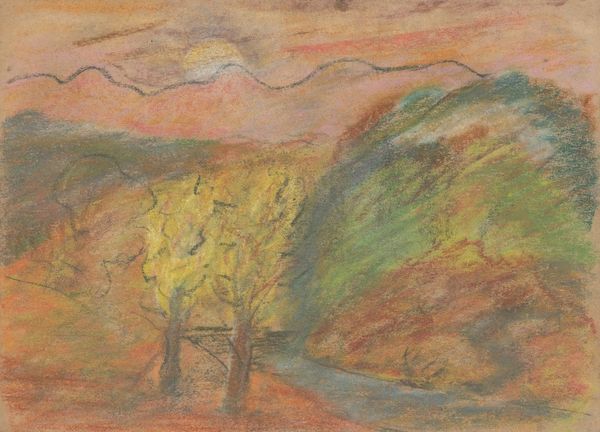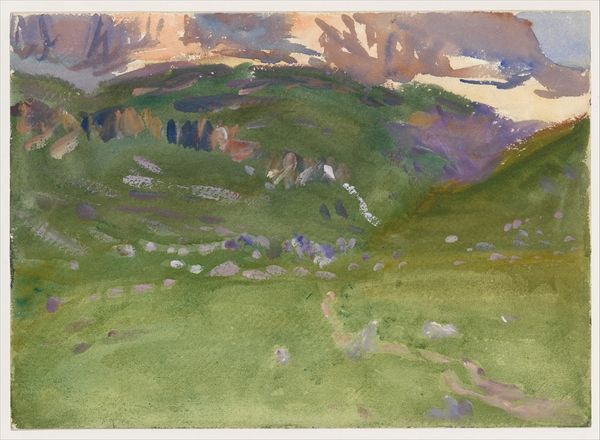
Copyright: Public Domain: Artvee
Editor: Right now, we're looking at "Valdez Hills" created by Marsden Hartley in 1918, utilizing pastel and other dry media. The sweeping strokes create this hazy landscape. I am struck by the interplay of muted and vibrant tones and the abstraction of the hills. What can you tell me about how the artist uses form here? Curator: Hartley's approach here is primarily through color and line, not representation. The strength lies not in the fidelity to visual reality, but in the arrangement of planes. Notice how the lines themselves are built by short hatching strokes in subtly contrasting colors; what is the effect of this method on the viewer? Editor: Well, it prevents a feeling of harshness; the forms blend and flow into one another. Curator: Precisely. There’s a structural ambiguity. The composition becomes about the relations between areas of color, leading our eyes on an interpretive journey. Do you notice a repeated compositional element, an overarching visual organization strategy? Editor: Now that you mention it, it seems the lines establish multiple planes; some closer to the foreground than others, adding depth. So rather than depicting a landscape, he’s constructing one through colour. Curator: You're precisely correct. Hartley gives primacy to formal relationships. How do you think this work pushes against traditional landscape painting? Editor: It challenges traditional landscapes through its subjective rendering of shapes and colors, shifting the focus from a mere replication to an expressionistic articulation. I see that the emotion stems from Hartley's abstract handling of colour to create spatial depth! Curator: Yes, this close reading is valuable. It exemplifies how studying form opens up more avenues of understanding.
Comments
No comments
Be the first to comment and join the conversation on the ultimate creative platform.
